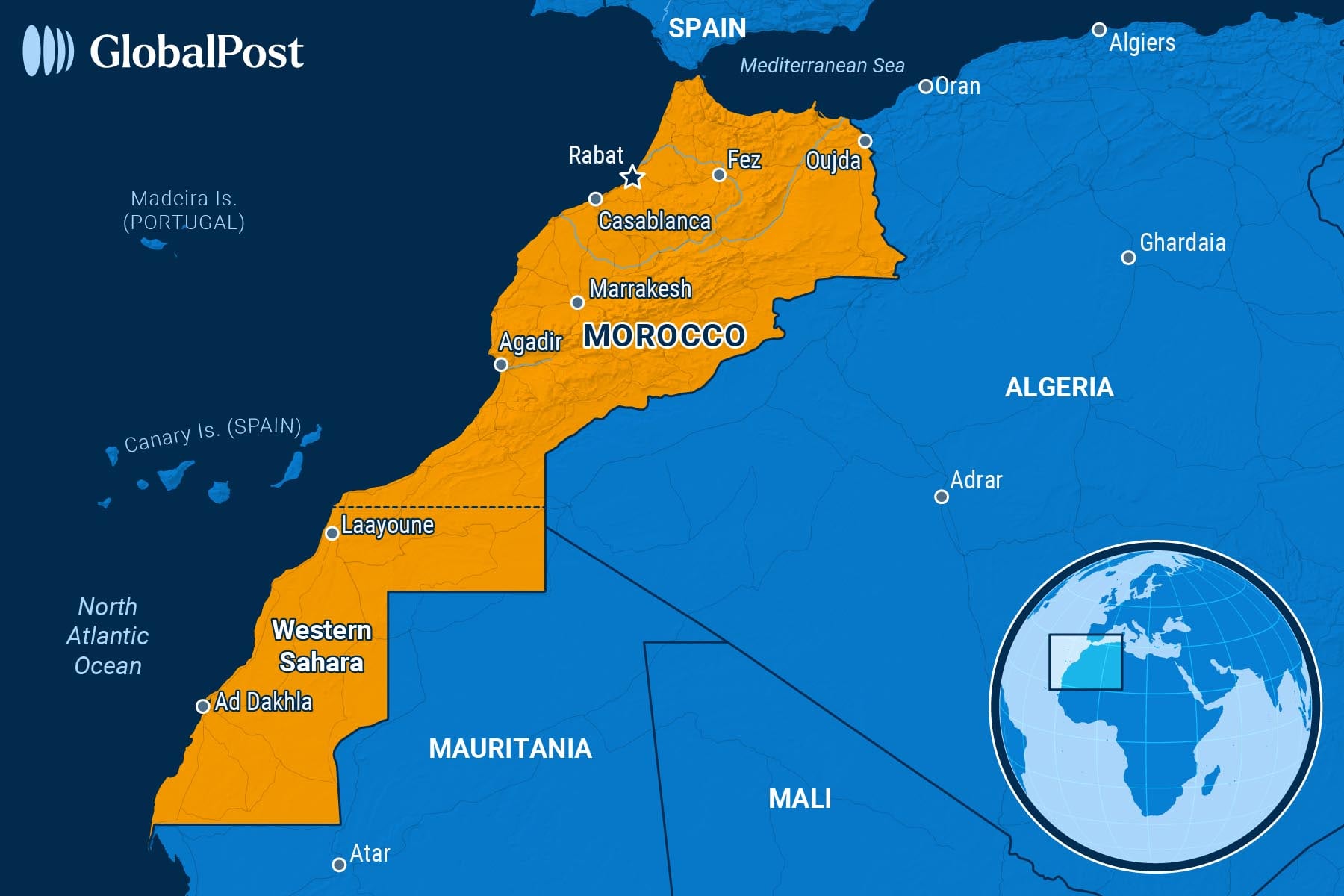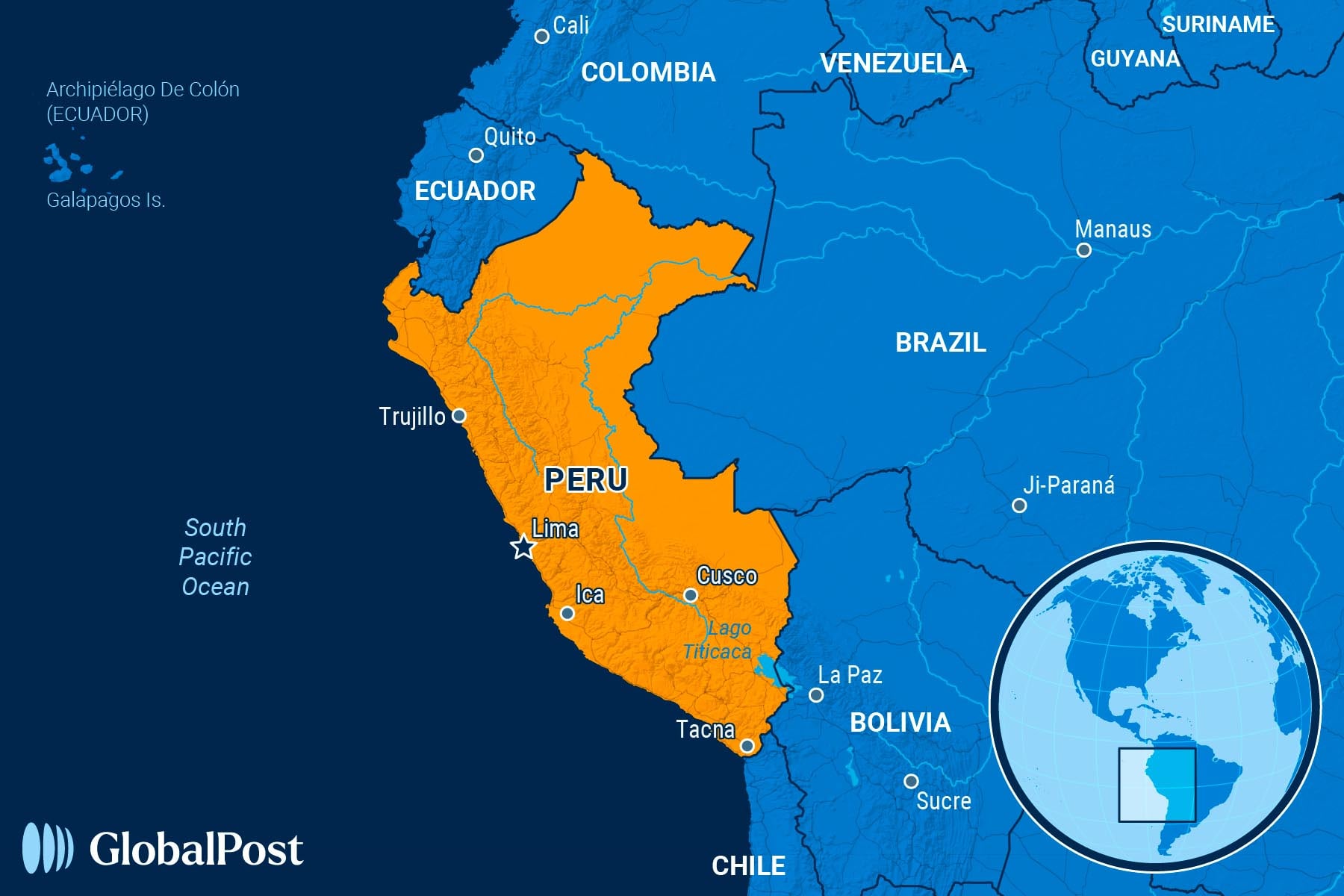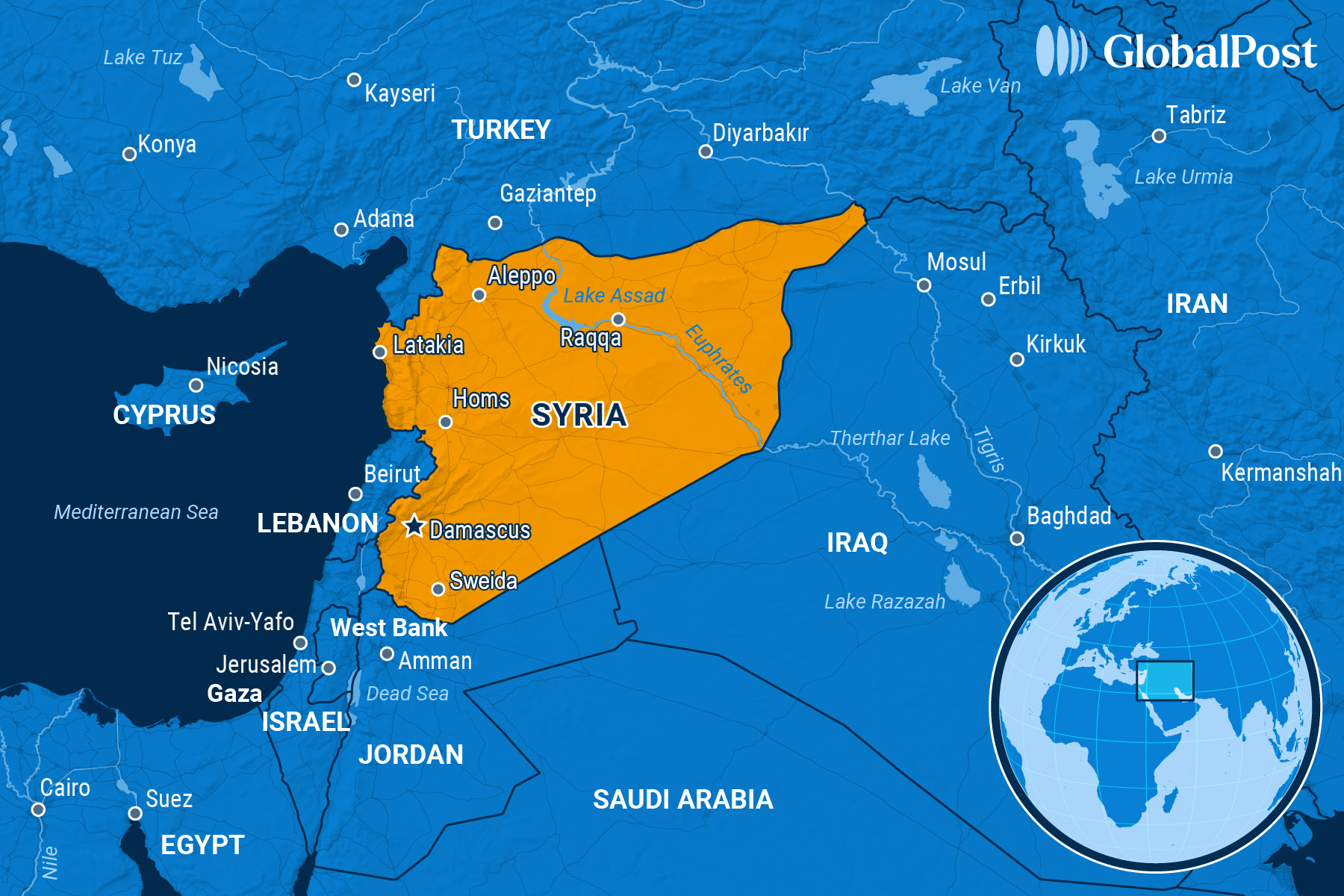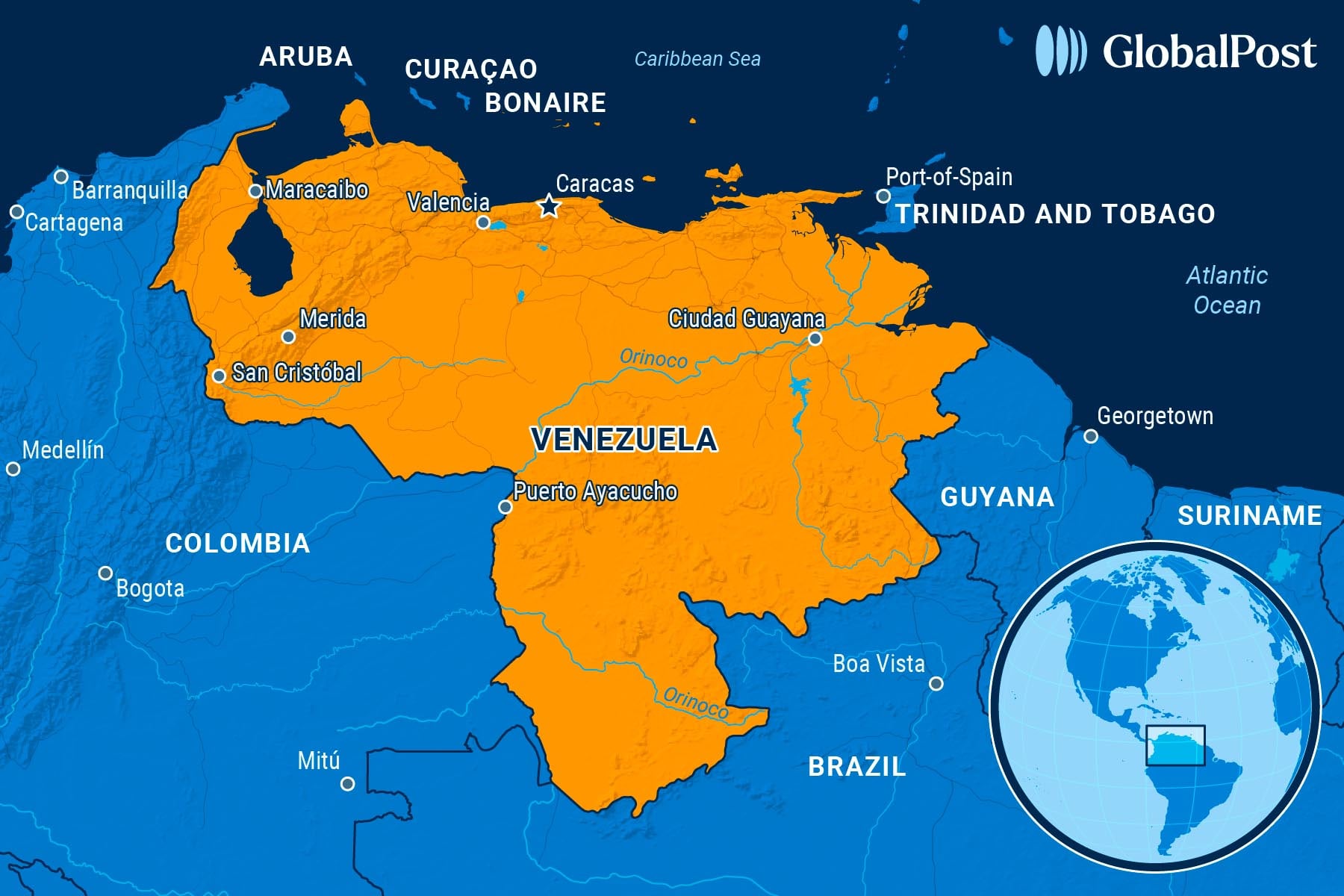In Morocco, Gen Z Protesters Want Services, Not Stadiums
NEED TO KNOW
In Morocco, Gen Z Protesters Want Services, Not Stadiums
MOROCCO
 In August, eight women died during routine cesarean sections at Hassan II Hospital in Agadir, in southwestern Morocco.
In August, eight women died during routine cesarean sections at Hassan II Hospital in Agadir, in southwestern Morocco.
Two weeks later, thousands of young Moroccans flooded the streets, part of a leaderless movement known as Gen Z 212, demanding that the government explain why it could pour $16 billion into World Cup soccer stadiums while public hospitals can’t keep mothers alive.
“Stadiums are here, but where are the hospitals?” protesters chanted at one demonstration in late September.
The ongoing unrest began outside Agadir’s crumbling Hassan II Hospital, which opened in 1967 and has never been modernized. Instead, it has become a national symbol of Morocco’s “two-speed” system – one in which public health care is collapsing as private clinics thrive.
“We’re short of everything at Hassan II Hospital – medical staff, beds, functioning equipment – but above all, we lack political will,” Saana Faouzi, a physician and opposition figure in Agadir, told Le Monde.
Down the road, cranes rise over a gleaming new university hospital beside a World Cup stadium – a scene, say commentators, that underscores the protesters’ chant: “Fewer stadiums, more hospitals.”
Morocco counts just 7.7 doctors per 10,000 people, with some regions reporting as few as 4.4 –far below the World Health Organization’s benchmark of 25. Across the country, 453 private clinics operate alongside just 166 public hospitals to serve about 38 million people.
In 2024, thousands of medical students and recent graduates protested for months, highlighting a problem that reflects decades of underinvestment and will require years of spending and systematic reforms to improve the way care is financed and delivered, wrote the Middle East Institute.
Meanwhile, the Gen Z 212 group also wants the government to invest more in the crumbling education system: Rural areas lack sufficient school infrastructure, and schools around the country have teacher shortages. Meanwhile, those in the profession routinely protest inadequate compensation: Over the past two years, 30 percent of the teaching force was on strike, affecting schools for months.
And the demonstrators are demanding more effective job creation: Youth unemployment hovers near 36 percent.
Analysts say the country exists in a disjointed reality, where the government prioritizes large-scale infrastructure and leisure projects to promote the country abroad and lure tourists at the expense of investing in serving its citizens. For example, Morocco is eleventh in the world on the FIFA soccer ranking, yet ranks 120th out of 193 countries in the United Nations’ 2025 Human Development Index. It is building the largest stadium in the world in anticipation of hosting the 2030 World Cup, yet it still sits in the bottom half globally of the Healthcare Index score.
While largely peaceful, the protests in several cities have morphed into rioting and destruction of public and private property. At the same time, a crackdown by security officials has led to three deaths. The viral videos of police beating protesters, more than 500 arrests, and an incident on Sept. 30 in which police vehicles drove into crowds in Oujda in eastern Morocco have only inspired more to join the group and protest.
Prime Minister Aziz Akhannouch has offered to speak with the protesters and, in early October, said he would implement reforms to address the protesters’ complaints. The problem is, there is no centralized leadership – the Gen Z 212 coordinates themselves on Discord, TikTok, and Instagram, and have no designated negotiator to speak with.
“This is a decentralized, leaderless and fluid organization, or let’s say, network,” Mohammed Masbah, director of the Moroccan Institute for Policy Analysis, told Al Jazeera. “They don’t have any leader and are not affiliated with any political party or union. That makes it difficult for authorities to negotiate or co-opt them because they don’t know who they are.”
Some demonstrators have appealed directly to the king, Mohammed VI. They are not challenging the monarchy, which is revered in Morocco, but asking him to dismiss the Akhannouch government coalition, led by a group of oligarchs and technocrats.
But constitutional reforms championed by the king in 2011 during the Arab Spring protests in the country that redistributed power from palace to parliament now limit his ability to dismiss the government or intervene directly.
Even so, on October 10, King Mohammed VI addressed Parliament for the first time since the protests began, urging his government to accelerate development programs and bridge the divide between Morocco’s megaprojects and its collapsing public services. He called for “a faster pace and stronger impact” from reforms.
Akhannouch, one of the world’s richest men, will likely remain in office, and Morocco’s political establishment is holding its line, say analysts. With parliamentary elections not until September 2026, Akhannouch can afford to wait. Morocco’s elites have weathered past unrest through symbolic gestures while keeping the system intact.
But that doesn’t mean the protesters are going to stop anytime soon. They are taking inspiration from other youth-led protests that have brought down governments in recent years in Nepal and Bangladesh, and are threatening others around the world.
“Beneath the spectacle of gleaming stadiums and bullet trains lies a deeper hunger for dignity, accountability, and equity,” wrote Sarah Zaaimi of the Atlantic Council. “Gen Z Moroccans are charting their own course toward justice…their quest is not against the crown or the system, but against the illusion that performance equals progress. Whether the (the establishment) chooses to listen – or continues dazzling itself with its own reflection – will define the trajectory of an entire nation.”
THE WORLD, BRIEFLY
Violent Anti-Crime Protests in Peru Leave One Dead as Government Fails to Quell Unrest
PERU
 One person died and more than 100 were injured Wednesday after protesters clashed with police at anti-crime demonstrations in the Peruvian capital of Lima, as weeks of unrest continued despite the ouster of the president over corruption and security failures, France 24 reported.
One person died and more than 100 were injured Wednesday after protesters clashed with police at anti-crime demonstrations in the Peruvian capital of Lima, as weeks of unrest continued despite the ouster of the president over corruption and security failures, France 24 reported.
During a protest organized on Wednesday by Gen Z groups, transport workers, and civil society organizations, some demonstrators tried to tear down metal barriers protecting Congress, while others threw stones and lit fireworks. Riot police responded with tear gas, Reuters noted.
One death, of a 32-year-old male, was reported: According to prosecutors, he was shot to death but they did not identify the shooter.
Newly appointed interim President Jose Jeri said the killing would be “objectively” investigated. Jeri blamed the violence on “delinquents who infiltrated a peaceful demonstration to sow chaos.”
In an effort to de-escalate the unrest, Jeri vowed to “declare war” on organized crime and make it his top priority.
The government’s perceived failure to deal with a worsening crime crisis has been drawing thousands of people to youth-led protests in Lima and other cities in recent weeks.
Following demonstrations by bus companies, merchants, and students against extortion by criminal gangs, and attacks on those who refuse to pay protection money, lawmakers voted last week to impeach President Dina Boluarte, blamed by critics for the crisis.
Extortion and contract killings have become daily events in the South American country. Gangs like Los Pulpos and Venezuela’s Tren de Aragua, active across Latin America, have escalated their kidnapping and ransom operations in the country.
The impeachment, however, failed to quell the unrest. Jeri, meanwhile, will remain in office until next year’s elections. However, he already faced serious scandals, including corruption allegations and a now-suspended investigation for sexual assault. He has denied any wrongdoing and said he would cooperate with investigators.
Still, analysts believe he won’t last long running the country. He is the country’s seventh president since 2016. Three of those are in prison.
Syrian and Russian Leaders Discuss ‘Redefining’ Ties in First Meeting
SYRIA
 Syrian interim President Ahmed al-Sharaa met with his Russian counterpart, Vladimir Putin, on Wednesday for the first time since taking the helm of the country, stressing that he intends to redefine the relationship between the two countries while honoring all existing deals, Reuters reported.
Syrian interim President Ahmed al-Sharaa met with his Russian counterpart, Vladimir Putin, on Wednesday for the first time since taking the helm of the country, stressing that he intends to redefine the relationship between the two countries while honoring all existing deals, Reuters reported.
Shaara, a former member of al-Qaeda who led the militia that ousted former Syrian autocrat and Russian ally, Bashar al-Assad, in December, has long said that he would reset relations with the West, Syria’s Middle East neighbors, and Russia.
Russia militarily supported Assad for years against the Syrian rebels that ultimately toppled him, and later granted Assad and his family asylum when they fled Syria.
Despite being on opposite sides during the civil war, the new Syrian leader has adopted a practical stance toward their relationship with Russia, analysts said.
Sharaa told Putin that Syria respects all existing agreements with Russia and acknowledges the bilateral relations and shared interests between the two countries.
Putin told Sharaa that Moscow is fully committed to acting on what he called “many interesting and useful beginnings,” and praised the historic links between the two countries, voicing hopes for their expansion, France 24 wrote.
Syria is interested in Russian support for reconstruction and for diversifying its foreign policy, while Russia wants to protect its military bases in Syria, crucial for safeguarding its presence in the Mediterranean and also Africa.
The future of Russia’s two main bases in Syria, the Hmeimim air base in Syria’s Latakia province and its naval facility at Tartous on the coast, is still unclear.
Meanwhile, Syria is also looking for guarantees that Russia will not help Assad supporters to rearm and hopes instead that it will help rebuild the Syrian army, according to a Syrian source.
Following the talks, Russian Deputy Prime Minister Alexander Novak told reporters that Russia was willing to assist Syria in rebuilding after years of civil war, including restoring energy, rail, and other infrastructure. Moscow has also reportedly sent oil shipments to Syria.
Sharaa was also hoping to obtain economic concessions from Russia, including the resumption of wheat supplies on favorable terms and compensation for war damage.
Sources told Reuters that Sharaa likely asked Russia for support against Israel’s request for a wider demilitarized zone in southern Syria, including the possible redeployment of Russian military police to help prevent further Israeli incursions.
One tricky issue is whether Russia will hand over Assad to face trial over alleged war crimes against Syrians. To date, Russian officials have ruled out such a move.
Venezuela Condemns US Moves Targeting the Country
VENEZUELA
 Venezuelan President Nicolás Maduro condemned US President Donald Trump’s decision to authorize CIA covert operations and potential land strikes in Venezuela, denouncing it as a severe violation of international law and an attempt at regime change, MercoPress reported.
Venezuelan President Nicolás Maduro condemned US President Donald Trump’s decision to authorize CIA covert operations and potential land strikes in Venezuela, denouncing it as a severe violation of international law and an attempt at regime change, MercoPress reported.
Maduro’s administration said this week that it would file a complaint with the United Nations Security Council and the Secretary-General, calling for accountability and urgent measures to avoid military escalation in the region.
Trump confirmed Wednesday that his administration secretly cleared the CIA to carry out covert and potentially deadly operations on Venezuelan territory, escalating a campaign against Maduro and his alleged role in smuggling drugs to the US.
The US recently deployed about 10,000 troops, eight warships, a nuclear-power submarine, and fighter jets to the Caribbean. Over the past month, the US military has carried out at least five strikes targeting boats off the Venezuelan coast, arguing they are smuggling drugs, Politico noted. The operations have killed 27 people so far, including six during the latest strike on Tuesday. United Nations officials said the raids amount to “extrajudicial executions.”
Trump told reporters that his administration has “almost totally stopped” drug trafficking by sea and is now considering strikes on Venezuelan territory. “We are certainly looking at land now because we have the sea very well under control,” Trump said.
Maduro ordered military exercises and said he was mobilizing the military, police, and civilian militia to defend the oil-rich country.
While the US emphasized that the recent strikes were carried out in international waters, the new clearance by the White House would allow the CIA to conduct lethal operations in Venezuela as well as a range of other activities throughout the Caribbean.
While it remains unclear whether the CIA is planning attacks on Venezuela, the spy agency has previously conducted numerous operations in South America, a legacy that prompted Maduro to say “No to CIA-orchestrated coups d’état” while appealing for peace on TV on Wednesday.
US officials have privately acknowledged that the ultimate goal of the campaign is to remove Maduro from power, the New York Times reported. The Trump administration does not recognize him as a legitimate president because of an election last year it deems fraudulent. At the same time, the US has accused him of leading the Cartel de los Soles – an accusation that he has denied. The US has also offered a $50 million bounty for Maduro, the BBC wrote.
Meanwhile, Venezuelan opposition leader María Corina Machado, who won the 2025 Nobel Peace Prize last week, has been calling for greater US support to fight what she considers a “war” on her country by Maduro, and has praised Trump’s efforts to counter the Venezuelan leader, she told CNN.
DISCOVERIES
Birds of a New Feather
There is a blue jay, and there is a green jay. The former (Cyanocitta cristata) is a temperate bird found across the Eastern US, the latter (Cyanocorax luxuosus) is a tropical bird found across Central America. The two are separated by 7 million years of evolution, and they have stayed out of each other’s way for most of that time.
Recently, however, researchers say they are meeting and mating, resulting in one of the first examples of a hybrid creature that is the result of recent changes in climate patterns.
“We think it’s the first observed vertebrate that’s hybridized as a result of two species both expanding their ranges due, at least in part, to climate change,” first study author Brian Stokes said in a statement, adding that previous vertebrate hybrids were the result of human activity.
In the 1950s, green jays barely reached southern Texas, while blue jays extended only as far west as Houston, so the two rarely met. Since then, however, green jays have moved north and blue jays west, making their ranges converge around San Antonio.
Stokes first spotted the hybrid bird on a social media post by a woman in a suburb northeast of San Antonio. In the picture, he saw an odd-looking blue bird with a black mask and white chest that looked vaguely like a blue jay, but that was also clearly different. Stokes then went to observe for himself.
“The first day, we tried to catch it, but it was really uncooperative,” he said. “But the second day, we got lucky.”
After doing so, he took a blood sample of the bird, banded its leg for future identification, and then released it.
According to an analysis, the bird is a male hybrid born to a green jay mother and a blue jay father. It is similar to a hybrid that scientists produced in captivity in the 1970s by crossing the two species.
“Hybridization is probably way more common in the natural world than researchers know about because there’s just so much inability to report these things happening,” Stokes said. “And it’s probably possible in a lot of species that we just don’t see because they’re physically separated from one another and so they don’t get the chance to try to mate.”
